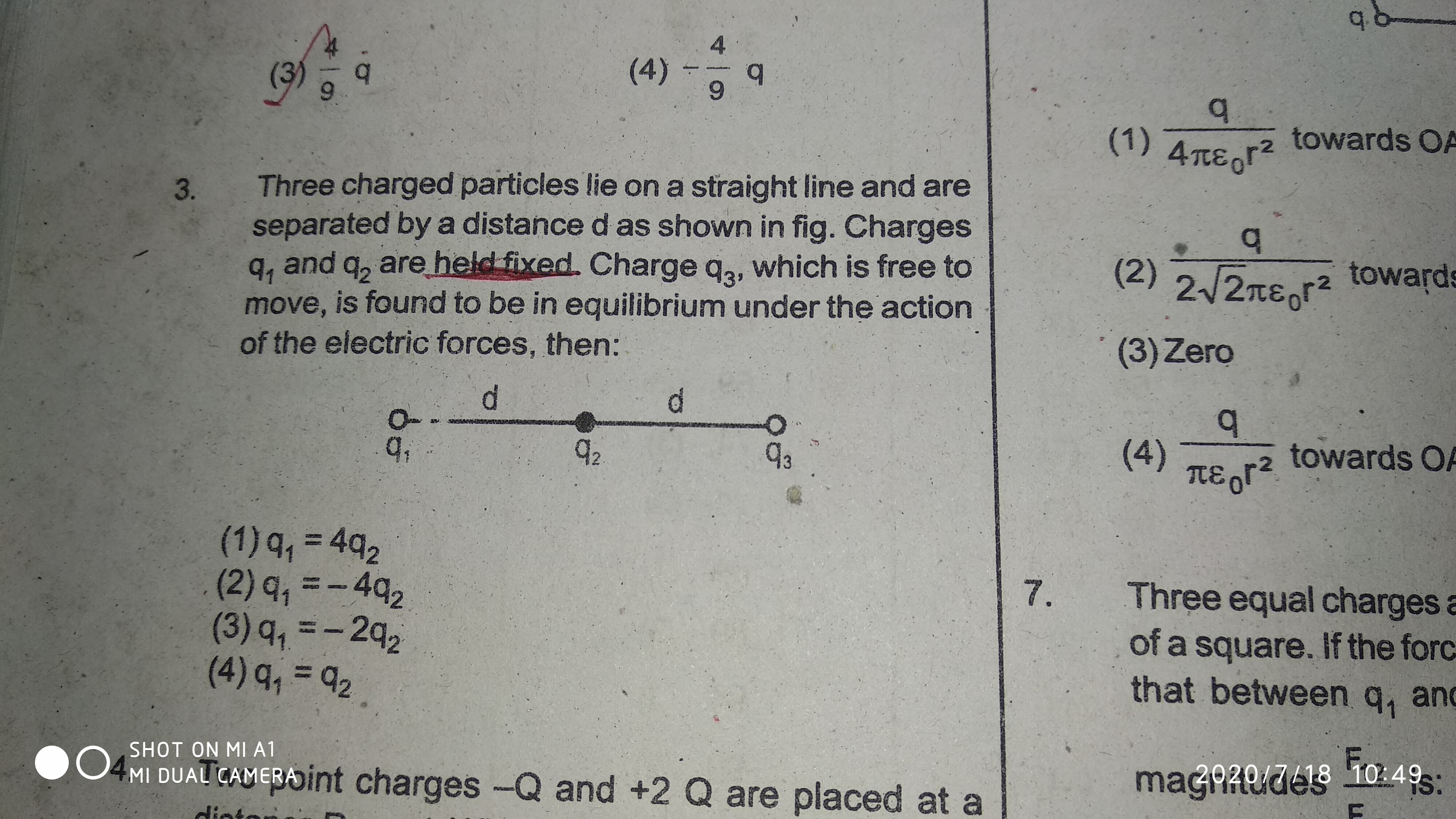Three charged particles lie on a straight line and are separated by a distance d as shown in fig. Charges q, and q, are held fixed. Charge g., which is free to 91 move, is found to be in equilibrium under the action of the electric forces, then: d. d. 92 93 (1) q,= 492 (2) q, =-492 (3) q, =-292 (4) q, =2 %3D
Three charged particles lie on a straight line and are separated by a distance d as shown in fig. Charges q, and q, are held fixed. Charge g., which is free to 91 move, is found to be in equilibrium under the action of the electric forces, then: d. d. 92 93 (1) q,= 492 (2) q, =-492 (3) q, =-292 (4) q, =2 %3D
Chapter6: Gauss's Law
Section: Chapter Questions
Problem 41P: Recall that in the example of a uniform charged sphere, p0=Q/(43R3). Rewrite the answers in terms of...
Related questions
Question

Transcribed Image Text:Three charged particles lie on a straight line and are
separated by a distance d as shown in fig. Charges
q, and q, are held fixed. Charge g., which is free to
91
move, is found to be in equilibrium under the action
of the electric forces, then:
d.
d.
92
93
(1) q,= 492
(2) q, =-492
(3) q, =-292
(4) q, =2
%3D
Expert Solution
This question has been solved!
Explore an expertly crafted, step-by-step solution for a thorough understanding of key concepts.
This is a popular solution!
Trending now
This is a popular solution!
Step by step
Solved in 2 steps with 2 images

Knowledge Booster
Learn more about
Need a deep-dive on the concept behind this application? Look no further. Learn more about this topic, physics and related others by exploring similar questions and additional content below.Recommended textbooks for you

